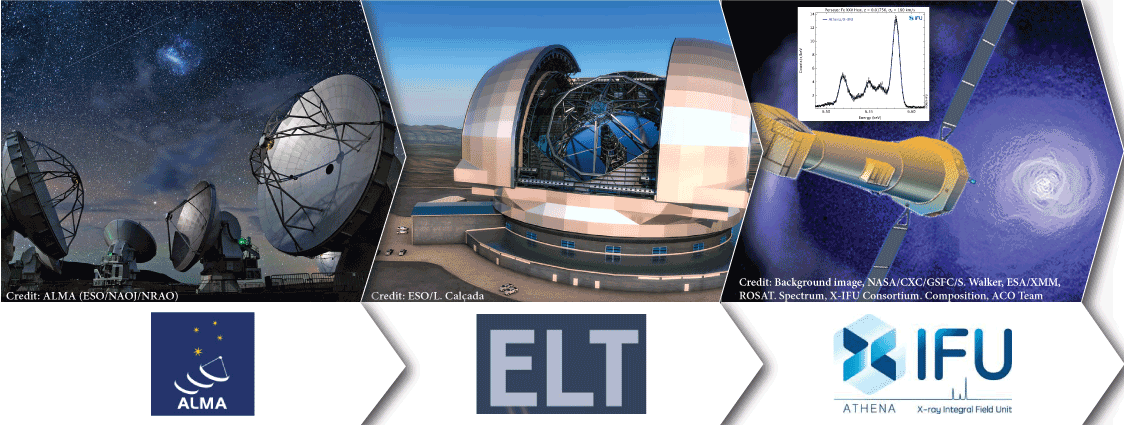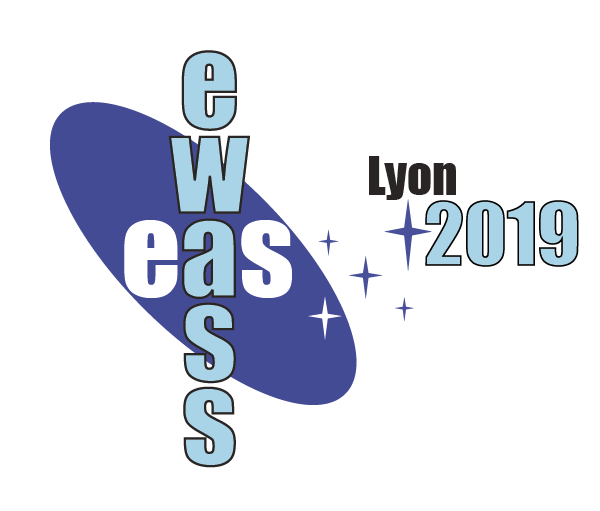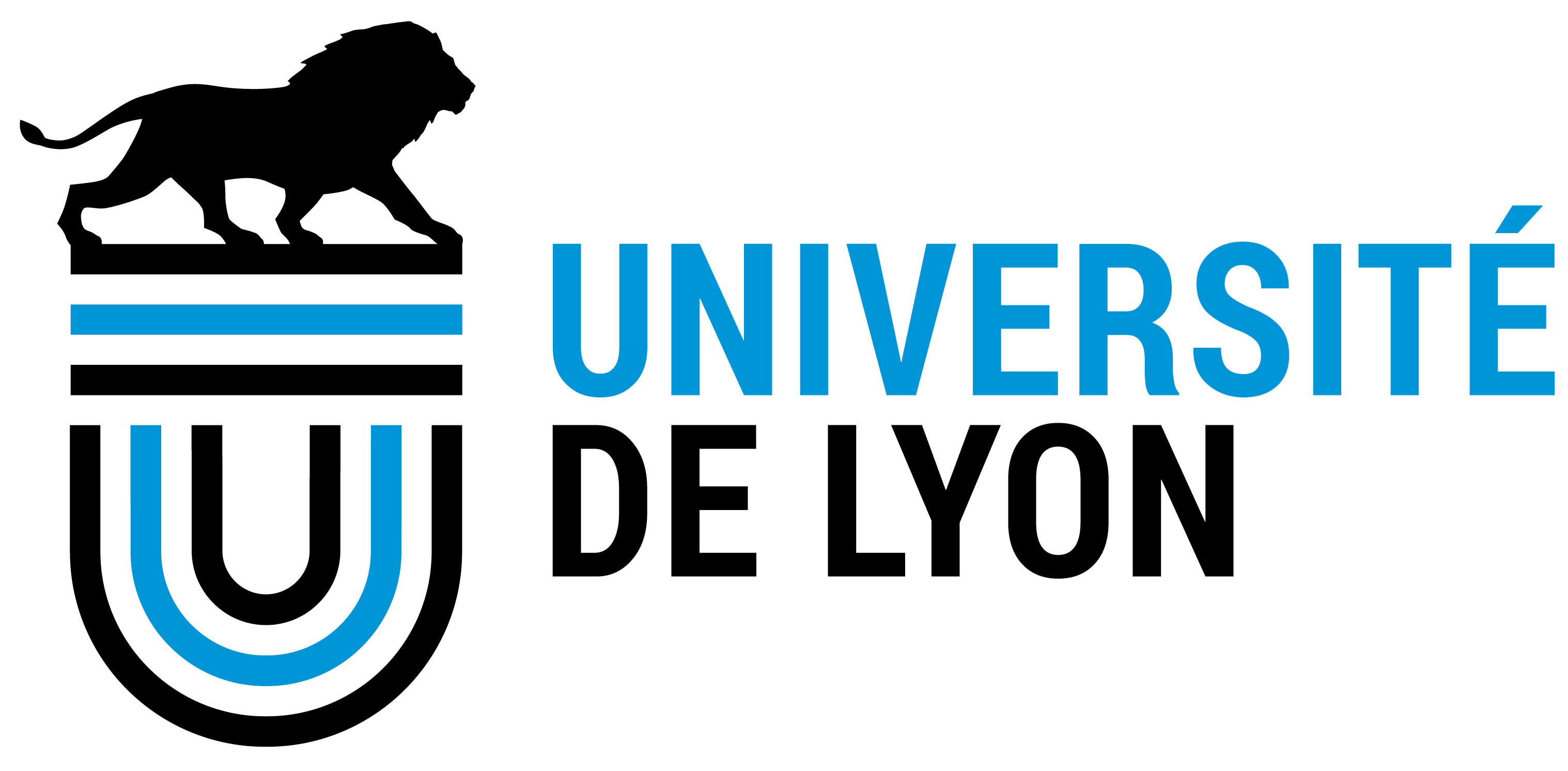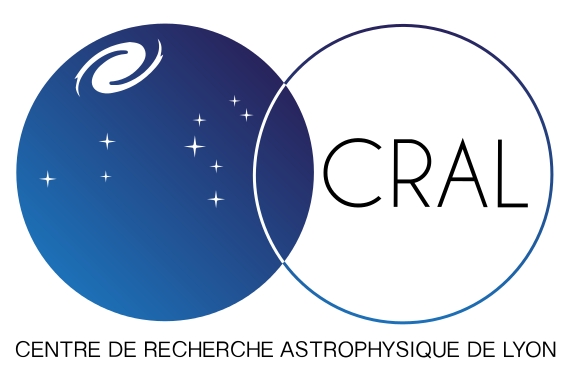Special Session SS31
28 June 2019
3-D spectroscopy from sub-mm to X-ray: the promise of Athena in the 2030s multiwavelength context
News:
The scope of the proposed Special Session is to bring together theoreticians, observers and data analysis experts on 3-D spectral data to review the potential of the synergies between the Athena X-IFU and 3-D spectroscopic facility from the sub-mm to the optical band.
Aims and scope
 In the early 2030s, innovative Integral Field Units (IFUs) will operate in the infrared and optical from large ground-based facilities (e.g. HARMONI@ELT). In space, the European Space Agency L-class X-ray observatory Athena. Athena will carry the first IFU operated in X-rays combining high spectral resolution with a spatial resolution (~5 arcseconds) comparable to IFUs in other wavelengths. Furthermore, the continuous operations of the Atacama Large Millimiter Array (ALMA) extends the real of 3-D spectroscopy to the millimiter and sub-millimiter bands.
In the early 2030s, innovative Integral Field Units (IFUs) will operate in the infrared and optical from large ground-based facilities (e.g. HARMONI@ELT). In space, the European Space Agency L-class X-ray observatory Athena. Athena will carry the first IFU operated in X-rays combining high spectral resolution with a spatial resolution (~5 arcseconds) comparable to IFUs in other wavelengths. Furthermore, the continuous operations of the Atacama Large Millimiter Array (ALMA) extends the real of 3-D spectroscopy to the millimiter and sub-millimiter bands.
The simultaneous availability of IFUs in the "traditional" optical/IR and in the high-energy domain will allow combined studies of galaxy dynamics and star formation at its cosmological peak with the opening of a potentially revolutionary observational window to study phenomena as diverse as the Warm-Hot Intergalactic Medium gas accretion onto the core of galaxy clusters at redshift up to 2, the interplay of accretion and ejection in Active Galactic Nuclei, and gas dynamics in the central region of galaxies, just to mention a few. Optical/NIR IFUs will also be key to identify accreting super-massive black holes down to the Epoch of Reionization that will be unveiled by deep X-ray surveys with the Athena Wide Field Imager (WFI).
Programme
The program of the Special Session is structured around the following three main topics:
- Review the science objectives that will require joint IFU observations in the early 30s, considering what is currently addressed by existing facilities (e.g. VLT/MUSE, and ALMA), and emphasizing the unique advances permitted by complementary X-ray IFU data
- Review the requirements of the IFUs planned to operate in the early 30s in comparison with the needs to achieve the science objectives identified above, including requirements deriving from the rapidly developing field of time domain astronomy.
- Review the needs in terms of theoretical modeling, as well as data analysis tools to fully exploit joint multi-wavelength 3-D spectroscopic observations
The program of the Special Session is available at the web page of the Athena Community Office .
Invited speakers
- Francisca Kemper (ESO)
- Roberto Maiolino (University of Cambridge)
- Johan Richards (University of Lyon)
- Mathieu Puech (Observatory of Paris Meudon)
- Elisa Costantini (SRON)
- Marcella Brusa (University of Bologna)
- Massimo Gaspari (Princeton University)
- Lisa Kewley (Australia National University)
Scientific organisers
Matteo Guainazzi (ESA) and
Didier Barret (IRAP) with the support of the Athena community office
Science Organizing Committee:
- Roland Bacon (University of Lyon)
- Xavier Barcons (ESO)
- Didier Barret (IRAP)
- Francoise Combes (Observatory of Paris)
- Thierry Contini (IRAP)
- Maria Diaz-Trigo (ESO)
- Matteo Guainazzi (ESA)
- Evanthia Hatziminaoglou (ESO)
- Silvia Martinez-Nunez (IFCA)
- Mara Salvato (MPE)
- Aurora Simionescu (SRON)
- Niranjan Thatte (University of Oxford)
Contact
For any information on the scientific program of this session, please contact:
ss31.aco @ ifca.unican.es, or consult the Special Session web page at the Athena Community Office.
Updated on Fri May 03 08:58:58 CEST 2019
|

 A power cut will shut down all EAS services on Tuesday, 10 January 2017 starting at 7:30 CET.
A power cut will shut down all EAS services on Tuesday, 10 January 2017 starting at 7:30 CET.





